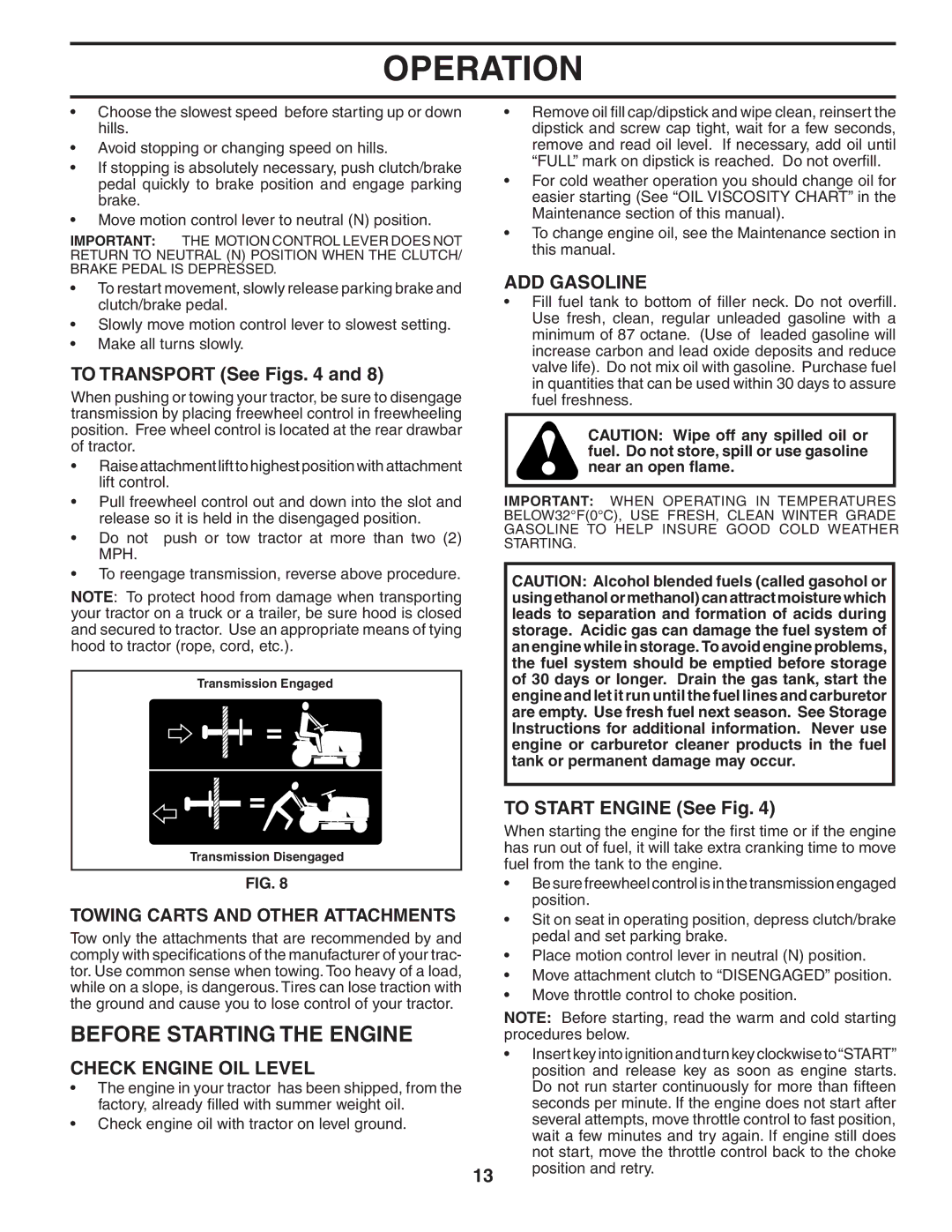402559, 96012004701 specifications
The Poulan 96012004701 and 402559 are innovative outdoor power equipment tools designed for both professional landscapers and avid gardeners. These tools are crafted with advanced technologies and features that enhance performance, reliability, and ease of use.One of the standout features of these Poulan products is their powerful engine performance. Both models typically come equipped with robust two-cycle engines that deliver reliable power with efficient fuel consumption. This means that users can tackle a variety of outdoor tasks without the worry of frequent refueling or interruptions. The engines are designed to be lightweight, reducing user fatigue during prolonged usage.
Durability is another hallmark of the Poulan 96012004701 and 402559 models. Constructed with high-quality materials, these tools can withstand the rigors of outdoor environments. Whether cutting through thick brush or trimming delicate hedges, users can rely on the sturdy build to handle various applications. Additionally, the components are often resistant to wear and tear, ensuring longevity and consistent performance.
User comfort and ergonomics are central to the design of these models. They are typically equipped with adjustable handles that provide a customized grip, allowing for comfort during extended use. The anti-vibration technology integrated into the handle helps to reduce fatigue and strain on the arms and hands, making each job more manageable.
In terms of versatility, the Poulan 96012004701 and 402559 are designed to tackle a wide range of outdoor tasks. Whether it’s edging a garden bed, trimming overgrown areas, or maintaining a manicured lawn, these tools are adaptable to the demands of the job. The ease of blade or attachment changes allows users to switch tasks swiftly, making these models efficient and time-saving.
Safety features also play an essential role in the design of these Poulan products. They commonly include features like protective guards and easy-start technologies, aimed at minimizing the risks associated with outdoor power equipment. The user-friendly starting mechanisms reduce the chances of accidental starts, providing peace of mind while operating.
In conclusion, the Poulan 96012004701 and 402559 combine power, durability, and user-centric design, making them reliable choices for anyone looking to enhance their landscaping capabilities. Whether for home use or professional landscaping services, these models stand out for their efficiency and performance, ensuring that outdoor tasks are completed with ease and precision.

